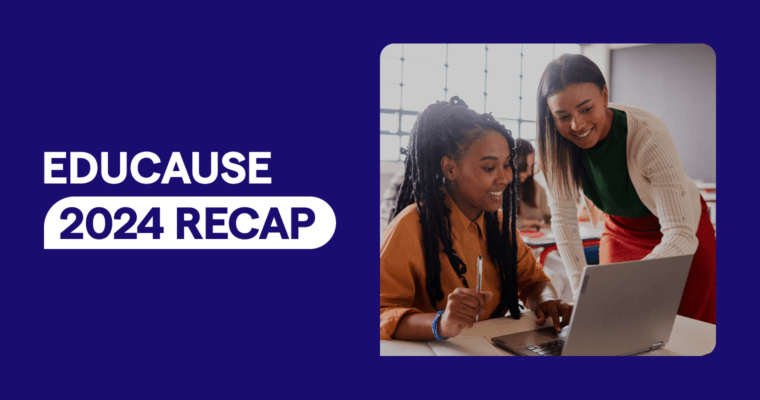
Reports of academic misconduct at universities are soaring following the onset of the COVID-19 pandemic. Among these, plagiarism incidents are a legitimate source of concern for institutions globally—75 percent of college educators surveyed by Grammarly indicate that students struggle with plagiarism and insufficient citation.
Why do students plagiarize? Some chalk it up to the added stress of distance learning. Evidence also suggests that the growing availability of online information and essay writing services targeted at college students are partially to blame.
But not all types of plagiarism are rooted in dishonesty or the intention to cheat. Many are inadvertent. Often, students plagiarize because they’re unclear on what constitutes plagiarism, in addition to the gray areas or imperfections in their research. Differences in language ability and cultural definitions of plagiarism may also make recognizing mistakes more challenging.
Sadly, even unintentional plagiarism can have a devastating impact on academic performance and students’ confidence over the long run. It doesn’t reflect well on institutions either, as plagiarism can drive up academic violations and unsuccessful course completions.
Because professional environments rely on written communication and collaboration more now than ever before, helping students understand the value of integrity in writing should be a top priority before they enter the workforce.
Four common types of unintentional plagiarism and how to help students avoid them
Educators can help avoid incidents of plagiarism by understanding their root causes and educating students accordingly. Continue reading to explore these common types of unintentional plagiarism, how and why students fall victim to them, and what to do to prevent future occurrences.
1 Forgetting to cite a source or citing it incorrectly
Accidental plagiarism is often a result of poor citation and research hygiene. Our recent study found that 30 percent of educators believe students struggle with plagiarism because they haven’t been taught how to cite resources correctly. Without the proper skills and guidance, students often forget to cite sources, forget to use quotation marks around direct excerpts, or cite sources incorrectly.
It’s common for students new to long-form essay writing and rigorous research to struggle with accidental plagiarism. As digital natives, many young students are not used to the time and effort required to gather, organize, and document information properly. Here are some familiar examples: A student is working on a complex writing assignment and didn’t keep track of their own research notes versus a direct quotation, forgot to list page numbers, or cited the wrong author. As a result, the student may mistakenly use the ideas and information without properly showing that they came from an outside source.
Teaching students how to correctly cite information and manage research before assigning written reports can prevent accidental plagiarism and help students avoid costly mistakes.
2 Paraphrasing improperly, or incorporating others’ ideas too directly
Paraphrasing plagiarism occurs when a quote or citation is reworded, but the result is still too similar to the source. It is often accidental, as students might not understand the subtleties or how to paraphrase and incorporate others’ ideas properly.
What’s more, there are inconsistencies across languages and cultures about what constitutes paraphrasing plagiarism, making this an equity issue for some students. Students writing in a second or third language may be at a disadvantage in identifying problematic paraphrasing. For educators, understanding students’ unique backgrounds may reveal a further need to provide more detailed citation instructions.
3 Confusing primary and secondary sources
Source-based plagiarism can be difficult for students (and even professionals) to understand and avoid. It occurs when there is confusion between primary and secondary sources and which to cite. A common mistake students make is referencing another writer’s original idea about a primary source from a secondary source. Then, they cite the primary source instead of the secondary source, thinking they have done what’s called for. As with other forms of accidental plagiarism, educators can incorporate research-skill training into their curriculum to help students avoid source-based plagiarism.
4 Repurposing past work
Self-plagiarism—when students recycle their previous work—can be a gray area. Students may not be clear on when they can or can’t reuse portions of, or in some cases, the original ideas from, past assignments. Communicating what is and isn’t acceptable use of past work is the most effective way to avoid self-plagiarism.
The bottom line: teach, communicate, and offer support
Educators shouldn’t assume that all students are up to speed on plagiarism standards and policies—even if they have signed academic integrity pledges that include this information. That’s why it’s essential to proactively communicate standards and offer education, support, and tools to avoid unintentional plagiarism and academic dishonesty. Provide examples to make sure that everyone understands the different types of plagiarism. If a student makes a mistake, assume the best and help them learn how to avoid future, potentially more serious incidents.
Reduce the risk of plagiarism with Grammarly for Education
Not all students enter higher education with the writing, research, and citation skills needed to succeed. Grammarly for Education offers 24/7 writing support to help fill these skill gaps, build student confidence, and make it easier for students to avoid plagiarism before it starts.
Grammarly’s built-in plagiarism detector compares writing against content databases and billions of web pages to suggest where citations are needed. Plus, our new auto-citations tool helps students cite sources accurately—automatically generating full and in-text citations without leaving the source site.
When students feel supported and confident expressing their ideas and knowledge in writing, they are less likely to plagiarize. Read our ebook to continue exploring ways that educators can reduce the risk of plagiarism and set students up for success through better, more confident writing.






